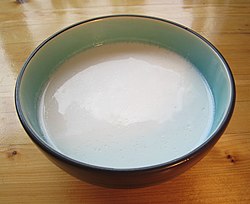 Coconuts, a staple food in Nauru. | |
| Country or region | Nauru |
|---|---|
| National dish | Coconut fish |
| National drink | Iced coffee |
The cuisine of Nauru is the traditional cuisine of the island state on the Pacific Ocean.
Contents
Nauru has the world's highest rate of obesity. [1]
